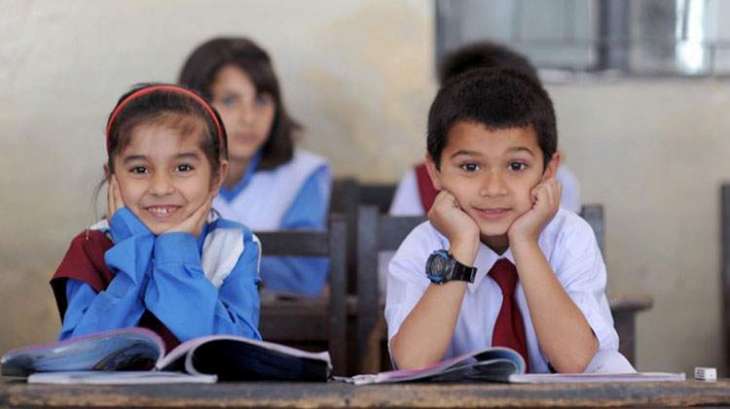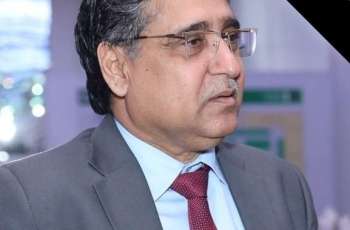Civil Society says that in order to ensure enrollment of out of schools boys and girls, additional Rs. 5.5 trillion will be required for the education sector for over the next 10 years.
LAHORE: (UrduPoint/Pakistan Point News-June 13th, 2020) A new report, “Bringing All the Girls to School – A Case for Investment,” jointly published by a group of civil society organizations working on girls’ right to education in Pakistan unveils that the government will have to make an investment to the tune of Rs. 6.5 trillion to ensure that every out-of-school (OOS) girl in the country has access to formal education by the year 2030. To ensure out of schools boys and girls back in schools, additional Rs. 5.5 trillion will have to be invested in the education sector over the next 10 years.
It is interesting to note that between 2012-13 to 2018-19, the Federal and provincial governments in Pakistan collectively spent Rs. 6 trillion on education. According to the projections provided in the report, this amount will merely have to be doubled over a ten-year period to achieve hundred per cent literacy in the country.
At present, 22.8 million or 44% of Pakistan’s children of school-going age (i.e. 5 – 16 years) are out of schools. The majority of these out-of-school children are girls. This inevitably means that Pakistan can possibly not overcome its current education crises without ensuring formal learning opportunities for its girl-children.
Over the period of the last five years from 2012-13 to 2016-17, the number of out-of-school children (boys and girls) has declined by approximately 12 per cent. The report asserts that at this rate of change, it would take Pakistan another 42 years to clear the existing backlog of OOS children in the country!
Both demand- and structural supply-side issues coupled with spasmodic planning have contributed to the current grim situation of education in Pakistan. However, while these predicaments individually and in unison persistently rob millions of Pakistani children from a chance at a better life, at the heart of Pakistan’s education crises lies the dilemma of dreadfully low investment.
Pakistan is a signatory to the “Education 2030 Incheon Declaration and Framework for Action 2015” according to which every country should spend at least 4 per cent of its GDP on education and/or allocate at least 15 to 20 per cent of its public expenditure for education. However, as highlighted in the report while the provincial governments have been allocating well above the minimum limit of 15 per cent throughout this time, the federal government has fallen short of the mark by a huge margin with allocations dwindling between a mere 2 – 2.2. per cent! And so, even though education is primarily a provincial subject, the onus of the responsibility to correct Pakistan’s current miserable state of education spending as a percentage of its GDP lies largely on the federal government. Because the federal spending on education as a percentage of the total spending is so low, it inevitably brings down the cumulative average of the country.
The study also takes into account the adverse effect the COVID-19 outbreak is likely to have on Pakistan’s already frail economy and how the recovery phase can be accelerated to minimize its spill-over on the education system.
After highlighting the state of Pakistan’s current investment in education, “Bringing All the Girls to School – A Case for Investment,” concludes with a detailed roadmap on how the structural rigidities within the country’s economic system can be addressed and more revenue generated – in the short-, medium- and long-term periods – to raise the required Rs. 6.5 trillion over by 2030 to educate the country’s over 12 million out-of-school girls.
Commenting on the demand, Zia ur Rehman, Chief Executive AwazCDS-Pakistan and National Convener Pakistan Development Alliance said, Government of Pakistan is also a signatory of United Nations’ Agenda 2030 for social transformation and sustainable development goals (SDGs). This is appreciable that government has already placed education in the category one in the national priority framework on SDGs to achieve desirable outcomes through immediate policy reforms and structural changes. This is also pertinent to mention that government has committed 100% enrollment of all school going age children up to the lower secondary level by the year 2030 in the national priority framework document approved by the National Economic Council chaired by the Prime Minister of Pakistan however this commitment may not be achievable until desired allocation of One Trillion Per Annum for Education is not considered.
Girls education was already mentioned as priority in the political manifestoes of all the political parties including ruling party Pakistan Tehrik-e-Insaf (PTI) however the last two year budgets were disappointing in terms of investments on girls’ education said Maryam Amjad Khan, Education Champion, AwazCDS-Pakistan. The dream of 100% enrollment of girls may not come true unless the government announces gender bifurcated budget each year and the budget utilization rate reaches up to 100% with maximum spending on developmental interventions instead of recurring expenditures.
“Bringing All the Girls to School – A Case for Investment,” has been authored by economist and Public Financial Management expert, Asim Bashir Khan. The study’s publication has been supported by Pakistan Coalition for Education, Pakistan Youth Change Advocates, AwazCDS Pakistan, Social Youth Council of Patriots, Orenda Project, Blue Veins, Idara Baraye Taleem-o-Taraqi, Thar Education Alliance, Science Fuse, da Hawwa Lur, AzCorp Entertainment and Durbeen.




